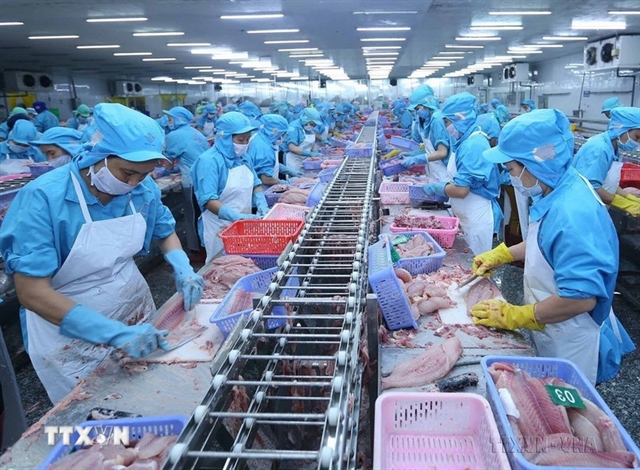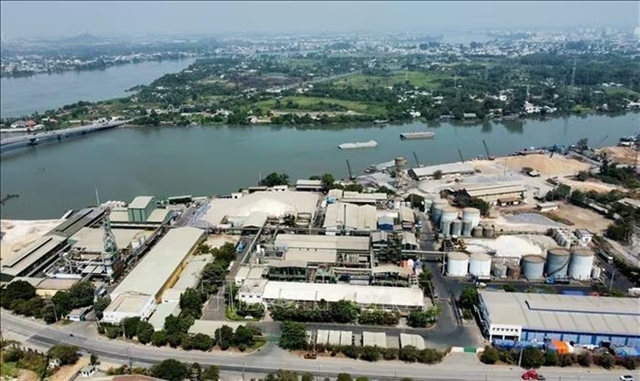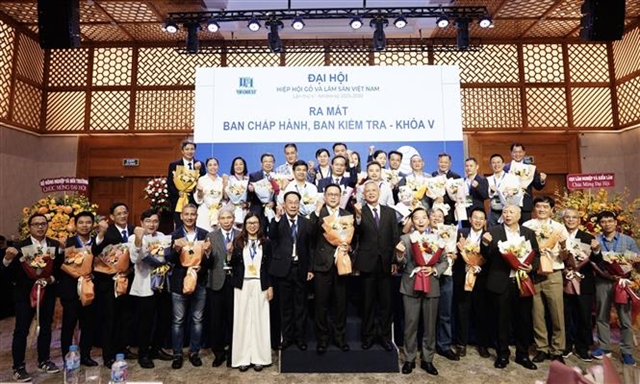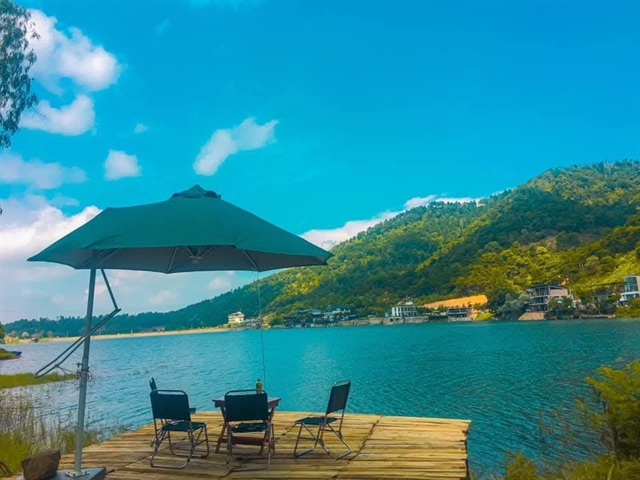 Travel
Travel

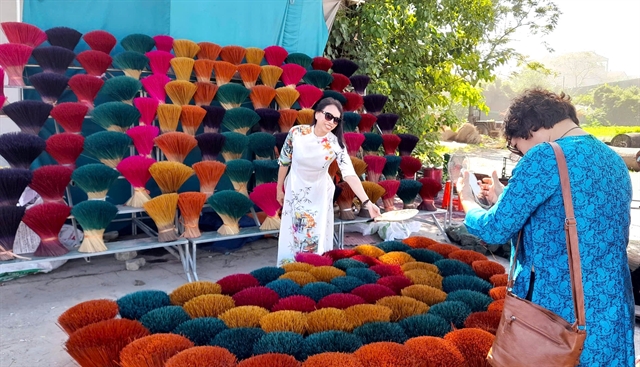 |
| Tourists take photos at the Quảng Phú Cầu incense stick craft village. — VNS Photo Thanh Nga |
HÀ NỘI — Hà Nội boasts a vast suburban area brimming with potential for diverse tourism development, including craft villages, cultural and spiritual experiences, ecological adventures and immersive activities.
The city is actively implementing innovative strategies to elevate suburban tourism, positioning it as a vital new growth driver.
Tourism in Hà Nội is experiencing a robust resurgence, surpassing pre-pandemic levels in visitor numbers and total revenue from tourism-related services. However, the reality is that many tourist spots in the city centre are nearing their capacity, particularly during holidays and Tết, which can lead to overcrowding and challenges in maintaining quality customer service. In contrast, Hà Nội's suburban areas remain ripe for exploration and development.
One notable region is the Sơn Nam cultural area in southern Hà Nội, rich in heritage and craft villages, including Quất Động for embroidery, Đông Cứu and Hạ Thái for lacquerware, Hồng Vân for bonsai and Vân Từ for sewing crafts. The area is also home to significant historical sites like the Nguyễn Trãi Temple and Cựu Village, which features hundreds of ancient houses.
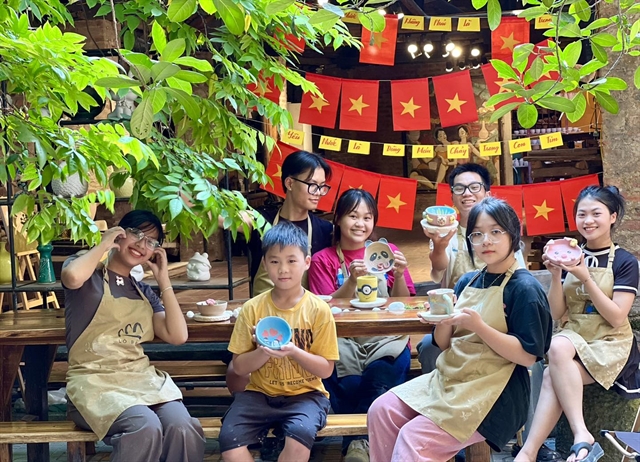 |
| Young tourists enjoy decorating vibrant ceramic products when visiting Bát Tràng ancient village. — Photo nhandan.vn |
The southwest of the city showcases further treasures with craft villages such as Quảng Phú Cầu, known for incense sticks, and Phú Vinh, renowned for rattan and bamboo weaving. This area also has notable pagodas like Hương, Bối Khê and Trăm Gian, making it a cultural hotspot.
Tourism experts highlight the immense potential of Hà Nội’s suburbs in several areas: cultural and spiritual tourism, craft village tours, eco-resort experiences and agricultural tourism - all ripe for exploration and development.
New motivations for growth
Tích Lộc Commune, a prominent flower-growing area in Hà Nội's suburbs, was recognised as a Hà Nội Craft Village in 2022, with its flower cultivation spanning approximately 100ha. The local government is committed to expanding this area to 140ha. Previously, farmers focused on selling finished flowers and ornamental plants, but now many households in Tích Giang 1, 2, and 3 villages have embraced eco-tourism and experiential tourism models, significantly boosting their economic returns.
Phùng Quang Thắng, the Permanent Vice President of the Việt Nam Tourism Association, notes that Tích Lộc can connect to various tourist destinations in the old Phúc Thọ District, such as Hát Môn Temple National Monument and other routes along Highway 32, including Đường Lâm ancient village and Thầy Pagoda.
With its diverse connections, Tích Giang has the potential to become a vibrant attraction, drawing both domestic and international tourists, with opportunities for day trips and longer tours.
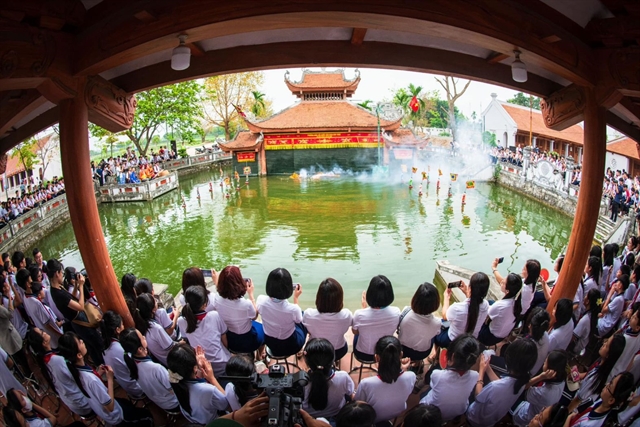 |
| Đào Thục Water Puppetry is a typical example of the dynamism of suburban tourism. — Photo nhandan.vn |
In the southern region, attractions like the Nội Bình Đà communal house and Quảng Phú Cầu incense stick craft village are featured on the 'South Thăng Long Heritage Road'.
Hà Nội recently unveiled a second tourist route, Nam Thăng Long, spotlighting Hạ Thái lacquer village.
Trần Trung Hiếu, Deputy Director of the Hà Nội Department of Tourism, emphasises that the craft villages along these routes possess high aesthetic value, making them appealing to tourists. By linking craft villages with other attractions, Hà Nội aims to create compelling packages targeted at the international market.
While many destinations are being explored, eco-tourism sites such as Thiên Sơn - Suối Ngà and Khoang Xanh - Suối Tiên are innovating their offerings. Once primarily focused on sightseeing, these areas now feature adventure sports, kayaking, camping and wellness services, appealing to both domestic and international visitors seeking unique experiences.
Đặng Hương Giang, Director of the Hà Nội Department of Tourism, highlights the suburbs’ advantages in developing spiritual, resort, and rural tourism - especially as the inner city approaches capacity. Planning tourism clusters that integrate culture, agriculture, and ecology is vital for enhancing visitor stays and spending.
Traditional suburban attractions like Bát Tràng pottery and Đường Lâm ancient village are continuously refreshed, offering tourists a variety of experiences.
Despite the richness of suburban tourism, significant barriers remain. The lack of systematic investment hinders the transformation of resources into attractive offerings. Many nationally recognised relics see visitor traffic only during specific festivals, while craft villages often depend solely on production and sales, failing to attract tourists.
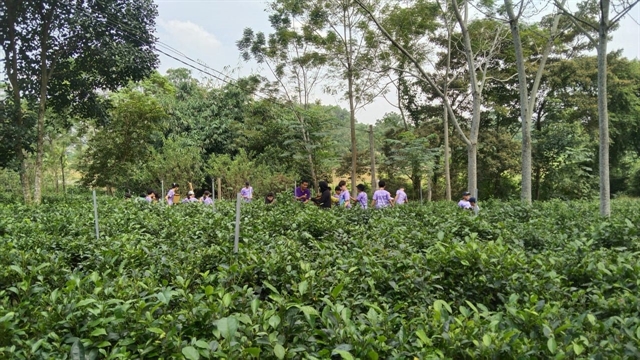 |
| Farming experiences are a growing trend in suburban tourism. — Photo nhandan.vn |
To overcome these challenges, a collaborative mechanism across sectors is essential. Cao Thi Ngoc Lan, Standing Vice President of the Việt Nam Tourism Association, advocates for improved regional links to create diverse tour chains that integrate the inner city with suburban and neighboring province attractions. Additionally, leveraging digital communication through social media, promotional videos, and virtual tours can enhance outreach.
Trần Trung Hiếu acknowledges that while community and experiential tourism models exist in suburban areas, expanding their scale and improving service quality is crucial. Developing nature-oriented activities like trekking and mountain biking can offer diverse options for adventure-seeking tourists.
Nguyễn Tiến Đạt, CEO of AZA Travel, emphasises that Hà Nội should concentrate on specific areas, particularly building craft villages and agricultural tourism products while ensuring strong connections with the inner city for effective tour and route development.
However, the current transportation infrastructure linking suburban attractions is often inadequate, with narrow roads and limited parking, which can diminish the visitor experience. Additionally, accommodation and food services often lack variety and professionalism, posing challenges for meeting the diverse needs of tourists.
Promotion and advertising of new products are fragmented and the potential of social media and digital technology remains untapped. Strengthening collaboration among local authorities, tourism associations, and businesses is crucial for establishing a cohesive brand for Hà Nội's suburban tourism.
To awaken the potential of suburban tourism, Hà Nội must accelerate efforts to upgrade traffic and drainage infrastructure in rural areas and enhance tourism facilities in key areas. Supporting local communities in training human resources and promoting the unique features of the region will create the necessary conditions for sustained tourism growth. VNS

